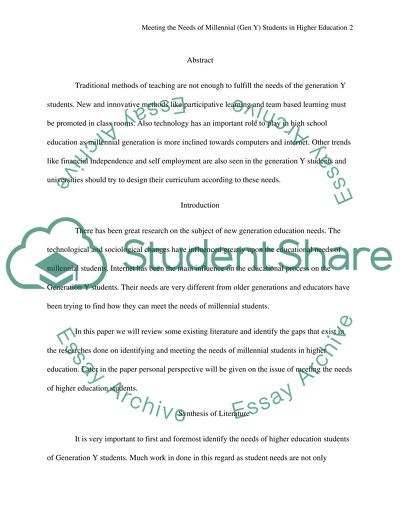Cite this document
(“Meeting the Needs of Millennial (Gen Y) Students in Higher Education Research Paper”, n.d.)
Meeting the Needs of Millennial (Gen Y) Students in Higher Education Research Paper. Retrieved from https://studentshare.org/miscellaneous/1571996-meeting-the-needs-of-millennial-gen-y-students-in-higher-education
Meeting the Needs of Millennial (Gen Y) Students in Higher Education Research Paper. Retrieved from https://studentshare.org/miscellaneous/1571996-meeting-the-needs-of-millennial-gen-y-students-in-higher-education
(Meeting the Needs of Millennial (Gen Y) Students in Higher Education Research Paper)
Meeting the Needs of Millennial (Gen Y) Students in Higher Education Research Paper. https://studentshare.org/miscellaneous/1571996-meeting-the-needs-of-millennial-gen-y-students-in-higher-education.
Meeting the Needs of Millennial (Gen Y) Students in Higher Education Research Paper. https://studentshare.org/miscellaneous/1571996-meeting-the-needs-of-millennial-gen-y-students-in-higher-education.
“Meeting the Needs of Millennial (Gen Y) Students in Higher Education Research Paper”, n.d. https://studentshare.org/miscellaneous/1571996-meeting-the-needs-of-millennial-gen-y-students-in-higher-education.


